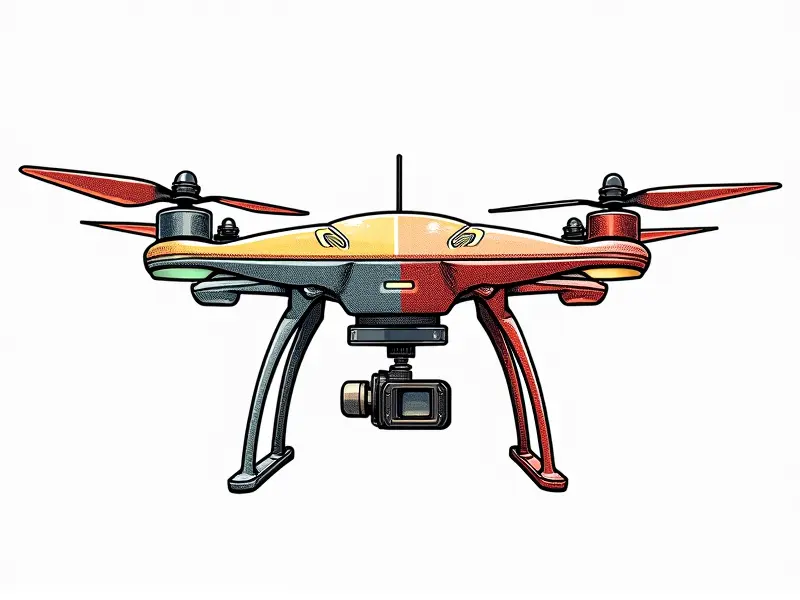Can drones see in the dark?

Drones have become increasingly popular for a variety of applications, from aerial photography to surveillance and even racing. One question that often arises is whether drones can operate effectively at night. This article delves into the capabilities and limitations of drones when flying after sunset.
Best Drones for Night Flying
Finding the right drone for nighttime operations requires careful consideration of several factors, including lighting systems, camera quality, and overall performance in low-light conditions. Some top contenders include:
- DJI Mavic 3 Pro: Equipped with advanced night vision capabilities and a powerful thermal imaging camera.
- Hubsan X4 H107D: Compact yet robust, featuring built-in LED lights for enhanced visibility in dark environments.
- Ardupilot FPV Racing Drone: Designed specifically for night racing with high-intensity lighting and superior maneuverability.
Can FPV Racing Drones Fly at Night?
FPV (First Person View) racing drones are engineered to provide an immersive flying experience. These drones can indeed fly at night, thanks to specialized equipment such as:
- High-Intensity LED Lights: Bright lights attached to the drone for better visibility.
- Night Vision Goggles: Special goggles that enhance visual clarity in dark conditions.
Drone Night Operations Explained
Flying drones at night presents unique challenges and opportunities. Key considerations include:
- Lights and Beacons: Ensuring the drone is visible to others, especially in populated areas.
- Battery Life: Drones typically consume more power when using lights or thermal imaging systems.
- Safety Regulations: Adhering to local laws and guidelines for nighttime operations.
Secrets of Flying Drones After Sunset
To maximize your drone's performance at night, follow these tips:
- Use High-Resolution Cameras: Opt for drones with high-resolution cameras to capture clear images and videos.
- Incorporate Thermal Imaging: Utilize thermal imaging technology to detect heat signatures in the dark.
- Plan Your Route Carefully: Map out your flight path beforehand to avoid obstacles and ensure safety.
Lighting Up the Dark with FPV Drones
FPV drones rely heavily on lighting systems for visibility. Here are some effective solutions:
- IR LED Lights: Infrared lights that provide clear vision through night goggles.
- Bright White LEDs: High-intensity white lights to illuminate the surroundings effectively.
Nighttime Drone Photography Tips
Capturing stunning images at night requires a bit of creativity and technical know-how. Here are some tips:
- Stabilize Your Camera: Use gimbal systems to ensure smooth shots, even in low light.
- Adjust Exposure Settings: Experiment with ISO, shutter speed, and aperture for optimal results.
- Use Tripods or Stabilizers: Keep your drone steady during long exposures for clearer images.
How Do FPV Racing Drones Work at Night?
FPV racing drones operate using a combination of high-intensity lights and specialized goggles. The process involves:
- Lighting Up the Path: Bright LED lights illuminate the drone's path, allowing pilots to see obstacles.
- Visual Feedback: Night vision goggles provide real-time visual feedback for precise control.
Best Drones with Thermal Imaging Cameras
Drones equipped with thermal imaging cameras are invaluable for nighttime operations. Some top choices include:
- FLIR Vue Pro R: Offers high-resolution thermal imaging and visible light video.
- DJI Matrice 300 RTK: Features advanced thermal imaging capabilities for various applications.
Enhancing Visibility with IR LED Drones
Infrared (IR) LEDs provide excellent visibility in dark environments. Key features include:
- Night Vision Capabilities: Infrared lights allow drones to see through the darkness.
- Heat Detection: IR LEDs can detect heat signatures, making them ideal for surveillance and rescue missions.
Exploring Urban Areas with Night Drones
Flying drones in urban areas at night requires careful planning. Consider the following:
- Lights and Beacons: Use lights to make your drone visible to others, especially during nighttime flights.
- Noise Levels: Be mindful of noise regulations in residential areas.
- Safety Zones: Avoid flying over crowded places or sensitive locations.
Flying Drones Safely After Sunset
To ensure safe nighttime drone operations, follow these guidelines:
- Check Weather Conditions: Ensure clear skies and no adverse weather conditions.
- Observe Flight Regulations: Adhere to local laws regarding night flying.
- Use Backup Systems: Equip your drone with backup batteries and emergency lights.
Conclusion
Flying drones at night can be an exhilarating experience, offering unique opportunities for photography, racing, and surveillance. By choosing the right equipment, following safety guidelines, and utilizing advanced technologies like thermal imaging and IR LEDs, you can maximize your drone's performance in low-light conditions.

